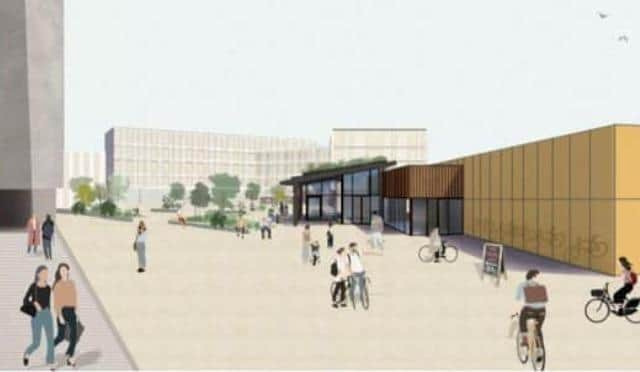More than £2m approved for new travel hub in Barnsley town centre to encourage residents to ditch cars
and live on Freeview channel 276
The South Yorkshire Mayoral Combined Authority (SYMCA) yesterday approved a £2.3m grant for the scheme, which is part of Barnsley Council’s Seam project.
Council bosses say “The Seam’” will create a new digital campus neighbourhood at the heart of the town centre, and the mixed-use development will include energy efficient housing, expansion space for the Digital Media Centre, 400 space multi-storey car park and a new active travel hub.
Advertisement
Hide AdAdvertisement
Hide Ad

Seven plots between Eastgate, Regent Street and Eldon Street North have been earmarked for the scheme.
The “active travel hub” is proposed for car parking space on the corner of Eldon Street and Regent Street, which will be constructed during the first stage of the project.
The hub will be a 500m2 single storey building housing a bike loan workshop, cycle storage, lockers, showers and a cafe.
A report to the SYMCA states that the existing hub is “currently close to capacity” and demand continues to grow.
Advertisement
Hide AdAdvertisement
Hide AdThe existing hub “does not have the necessary space available to accommodate the increasing public use,” and the new scheme will”encourage active travel within Barnsley and increase accessibility between housing and employment opportunities as well as a modal shift from private cars to active travel methods.”

